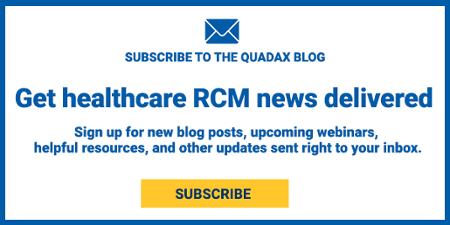Optimize revenue performance, ease administrative burdens, and deliver a seamless, patient-centered experience from the very first interaction.
Hospitals and health systems are under increasing pressure to improve financial performance, reduce administrative burden, and enhance the patient experience while managing staffing shortages and tighter budgets. Two areas have become essential to achieving these goals: Patient Access and Patient Engagement.
Together, these technologies play a vital role in strengthening the front end of the revenue cycle, ensuring patients are financially prepared for care while improving operational efficiency and communication.
Why Patient Access and Engagement Tools Matter
When thoughtfully implemented, Patient Access and Patient Engagement tools can transform how healthcare organizations operate. By digitizing, automating, and connecting the patient journey, providers can achieve:
- Faster and cleaner claim submission
- Reduced denials and shorter AR cycles
- Increased patient satisfaction and retention
- Higher rates of upfront and point-of-service collections
- Improved staff productivity and consistency
These improvements contribute to a stronger revenue cycle and better overall patient experience.
How Patient Access Tools Address Revenue Cycle Challenges
Patient Access solutions help prepare patients financially before services are rendered, reducing friction, delays, and billing errors. They are particularly valuable in addressing some of the most challenging front-end processes in your revenue cycle.
Key functional areas include:
- Boosting Front-End Collections
Enabling real-time cost estimates and offering flexible, user-friendly payment options helps increase point-of-service collections and improve patient financial readiness. - Reducing Denials & Accelerating A/R
Tools that support clean claim submission—such as eligibility verification, authorization tracking, and medical necessity checks—can reduce preventable denials and shorten the time to reimbursement. - Accurate Out-of-Pocket Estimation
Leveraging real-time eligibility data, HL7 feeds, payer contracts, and chargemaster (CDM) information can generate highly accurate estimates. This enables transparent financial conversations and supports better patient decision-making. - Supporting Staff with Smart Tools and Reporting
Providing staff with intuitive dashboards, guided workflows, and real-time reporting tools helps drive consistency, reduce burnout, and free up time for more complex or high-touch tasks.
By simplifying and standardizing pre-registration processes, Patient Access tools contribute to more predictable cash flow and higher-quality patient interactions.
How Patient Engagement Tools Are Changing Healthcare Access
Patient Engagement technologies modernize the way healthcare providers communicate with and support patients before their appointments. These tools allow for more efficient, convenient, and proactive interactions across key touchpoints.
Common features include:
- Contactless check-in
- Digital intake forms
- Secure online payment processing
- Intelligent, automated communication
Patients benefit from self-service tools that let them complete forms, schedule appointments, and manage balances on their own time, from any device. At the same time, these tools reduce administrative burden, increase appointment adherence, and improve data accuracy. When paired with staff-facing dashboards and reporting tools, Patient Engagement platforms also support smoother workflows and stronger integration with EHR systems.
The Power of Combining Patient Access and Engagement
When Patient Access and Patient Engagement tools work in tandem, they enable a fully connected, front-end revenue cycle experience—from financial clearance to digital intake to final payment. This alignment improves communication, transparency, and operational outcomes.
An integrated approach offers key benefits such as increased collections prior to service, fewer delays and billing errors, greater patient trust and satisfaction, and more efficient use of staff time and resources. Incorporating both tools helps healthcare organizations deliver a modern and patient-centric experience while supporting critical financial goals.
Curious how it could work for your workflow? Schedule a personalized demo today!


